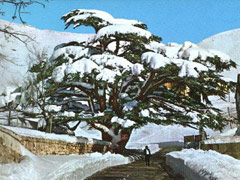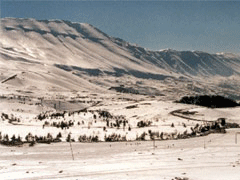

: GUIDE INFO :
- About Us
- Contact Us
- Social Media
- F.A.Q
- Plans
- Albums
- News & Events
- Get A Website
- Marketing Tips
- Useful Links
- International Links
: HOTELS DIRECTORY :
- Beirut Hotels
- Bekaa Hotels
- Mount Lebanon Hotels
- North Lebanon Hotels
- South Lebanon Hotels
: LEBANON INFO :
- Transportation In Lebanon
- Touristic Sites
- Featured Resorts
- Resorts>
- Grottos
- Embassies in Lebanon
- Photo Gallery
- Articles About Lebanon
- Songs About Lebanon
: SISTER SITES :
- AtLebanon Directory
- Advertise Lebanon
- Professional Innovations
- Lebanon Auto Guide
- Bcharre Chalet & Motel
: GOOGLE ADS :
|
» CEDARS CITY LEBANON
 THE CEDARS OF LEBANON are an integral part of the history of the country, just as the antique cities of Byblos, Tyre and Baalbek. They date back to antiquity, when the Phoenicians were exporting cedar-wood to the pharaohs from the apparently inexhaustible forests which at the time covered the upper reaches of the mountains. The wood was not only used for construction but more especially for nobler purposes; this was the sacred wood of the gods and used to honour the dead, a task to which the people of the ancient Orient attached deep importance.
THE CEDARS OF LEBANON are an integral part of the history of the country, just as the antique cities of Byblos, Tyre and Baalbek. They date back to antiquity, when the Phoenicians were exporting cedar-wood to the pharaohs from the apparently inexhaustible forests which at the time covered the upper reaches of the mountains. The wood was not only used for construction but more especially for nobler purposes; this was the sacred wood of the gods and used to honour the dead, a task to which the people of the ancient Orient attached deep importance.
The cedars of today are very few in number because they have been overexploited, but their isolation gives them even greater majesty, evoking some awesome presence in the pure silence of the mountain peaks, standing strong under the snow amid sparkling cascades or locked in a grim struggle against the desolation of bare rock.  Hundreds of young Cedar trees have been planted around the area during the last 30 years, but since they only grow at a rate of 1 cm every year, it will be many generations before these saplings reach the impressive size of those in the forest.
Hundreds of young Cedar trees have been planted around the area during the last 30 years, but since they only grow at a rate of 1 cm every year, it will be many generations before these saplings reach the impressive size of those in the forest.
In addition to the Cedar forest, there are a number of sites of interest in the area. The town of Bsharri is best known as the birth place and resting place of Gibran Khalil Gibran, Lebanon's most famous mystic poet, artist and novelist. The Gibran Museum a converted monastery houses his paintings, drawings, and personal effects, as well as his casket. The town also has three churches and a waterfall.For more info please visit: Ministry of Tourism |
|










 Lebanon Auto Guide
Post,Buy your car.
Lebanon Auto Guide
Post,Buy your car.
 Chalets & Loding Rooms
One of Besharry/Al-Arz Tourists Destination
Chalets & Loding Rooms
One of Besharry/Al-Arz Tourists Destination